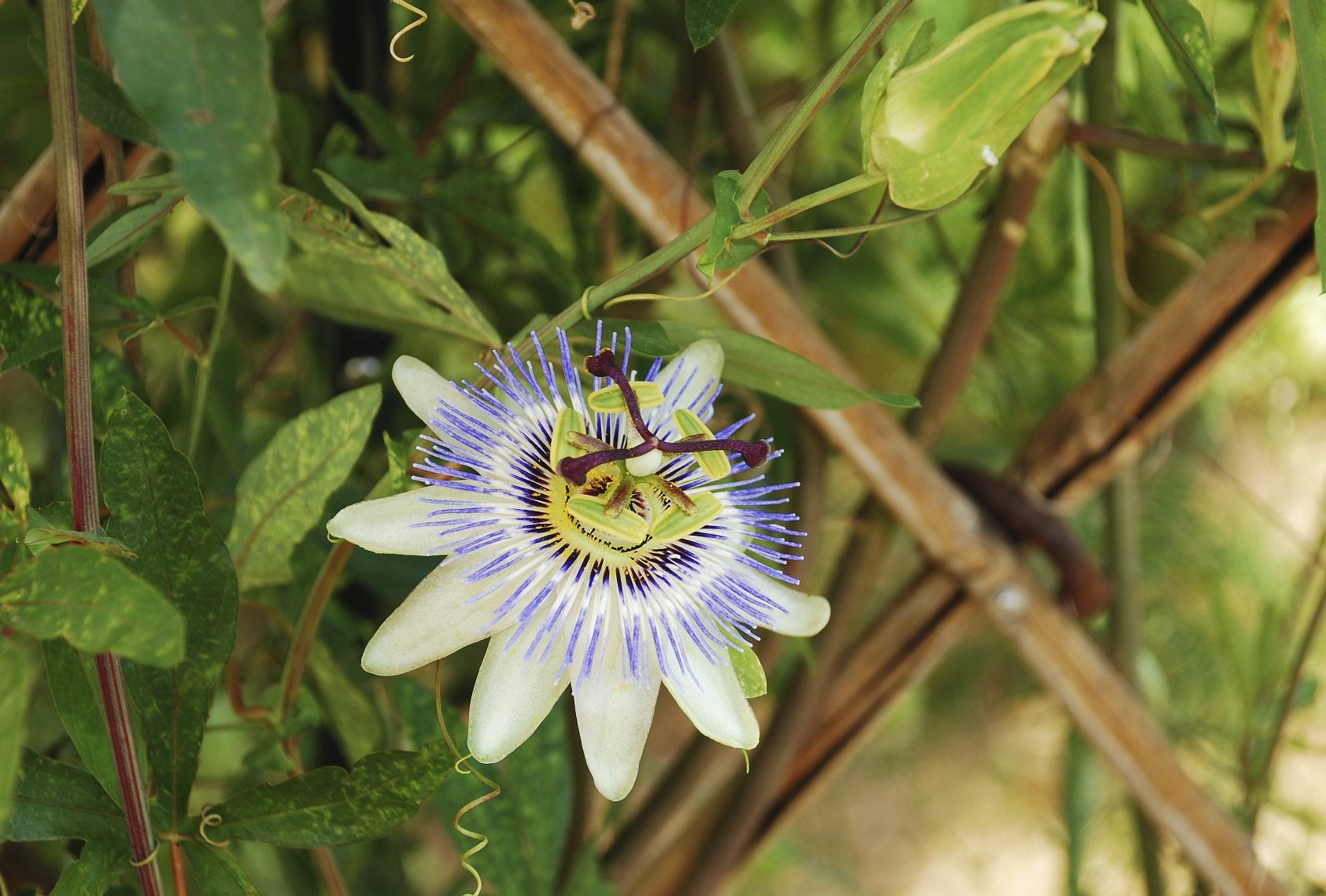Can You Transplant Passion Vines: When And How To Transplant A Passion Vine


Passion fruit vines are vigorous growers that send out twirling shoots in every direction. The plants are so energetic that they can take over an area that doesn’t offer enough vertical support. Transplanting passionflower vines may be necessary to afford them enough growing space and scaffolding for vertical growth and training. You must know first when to move a passionflower vine and finally how to transplant a passion vine to ensure the plant’s continued health. Soil type, lighting, and vine protection are the final considerations. A step-by-step analysis of how to transplant a passion vine will have you on the road to success and see a future filled with juicy fruit.
Can You Transplant Passion Vines?
There are around 400 species of Passiflora, most of which are tropical to sub-tropical. Passion fruit vines produce rampant growth that swirls in an eddy of attractive foliage and delicate, wiry stems. The most common are the purple and yellow fruited varieties. The purple form is often grown on rootstock to increase its cold tolerance but can produce suckers. Passion fruit has a deep taproot, which must be part of any transplant for the best outcome. Plants that have been grown off of rootstocks should not be transplanted, as the disturbance can trigger more annoying and unproductive suckers. Some growers recommend removing these suckers or offshoots and transplanting them to make new vines. The resulting vines will either not produce any fruit, or the fruit will be inedible. Can you transplant passion vines grown from seed? The answer is yes indeed. These are the perfect specimens to move and, with proper preparation, even a mature vine should establish quickly and well to its new home.
When to Move a Passionflower Vine
Whether your objective is to take a vine with you to a new home or change the location of a poorly situated vine, transplanting passionflower vines should take place when the weather is mild but not cold. This reduces the stress on the plant during the transition. The best time of year is just before the vine begins actively growing. In temperate climates, this is early spring. In year-round warm regions, choose a period in winter when growth has slowed. Do not fertilize the plant for six to eight weeks before transplanting or it will have tender new growth which may be disturbed by the transplanting process. You may choose to cut the vines back for ease of handling or leave them intact.
How to Transplant a Passionflower Vine
The roots of these Passiflora can grow quite deep so it is necessary to excavate deeply and around the root zone. In older plants, this can be quite an undertaking and may require you to beg some assistance. Larger root balls can be transported by moving them out of their old planting site onto a tarp. Choose a site that is sunny with wind protection and well-draining soil with average to slightly acidic pH. Dig a hole as big as the root ball and incorporate some compost or aged manure. Push in a trellis, stakes, or other support. Plant the vine as deep as it was growing previously, filling in around the roots carefully and tamping the soil. Use plant ties on vines to help them adhere to the new support. Over time the tendrils will wind around and self-support.
Care of Transplanted Passion Flowers
Water the plant well and keep it consistently moist. Do not fertilize until the plant has established itself, usually about a month later. Passionflower vines need a lot of water, but for the most efficient irrigation, it is best to water deeply to help plants develop a deeper root base. Allow the surface of soil to dry out before applying more moisture. Newly transplanted vines will have to be watched and trained as they re-establish themselves. Occasional pruning of errant vines will help form a stronger plant. Additionally, on younger vines, pinch off the top of new growth to encourage branching. If cold weather threatens, apply 2 inches (5 cm.) of mulch around the root zone of the plant, taking care to keep it from the lower stems. In a month, use a 10-5-20 fertilizer to promote new growth and help the plant start forming flowers and fruit.
Sign up for the Gardening Know How newsletter today and receive a free copy of our e-book "How to Grow Delicious Tomatoes".

Bonnie Grant is a professional landscaper with a Certification in Urban Gardening. She has been gardening and writing for 15 years. A former professional chef, she has a passion for edible landscaping.